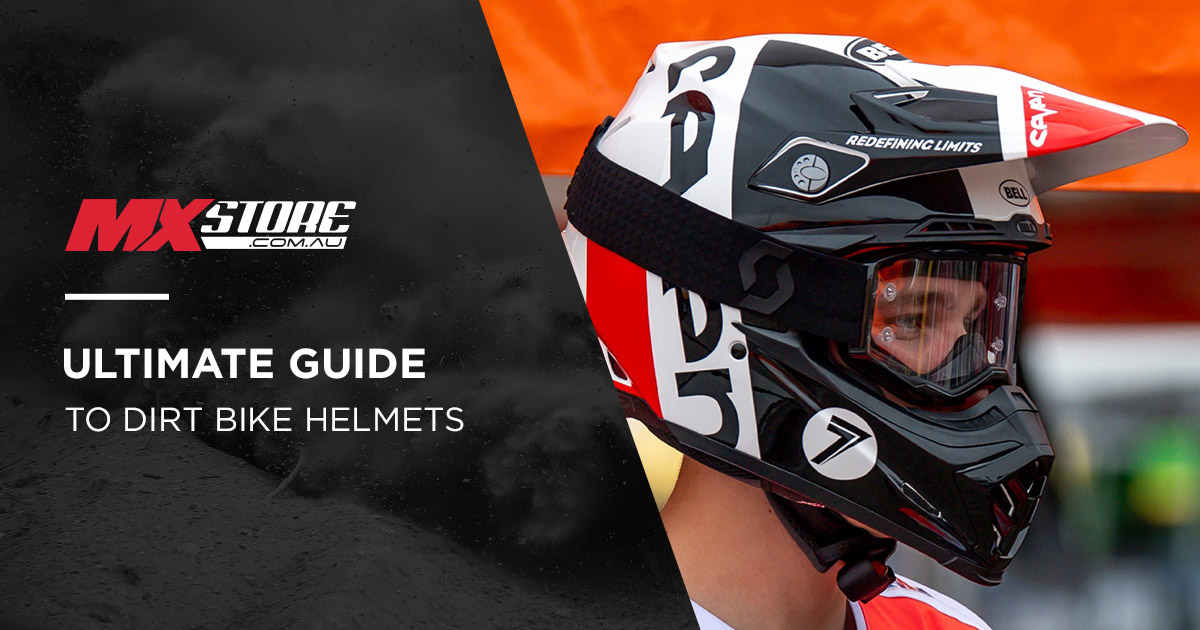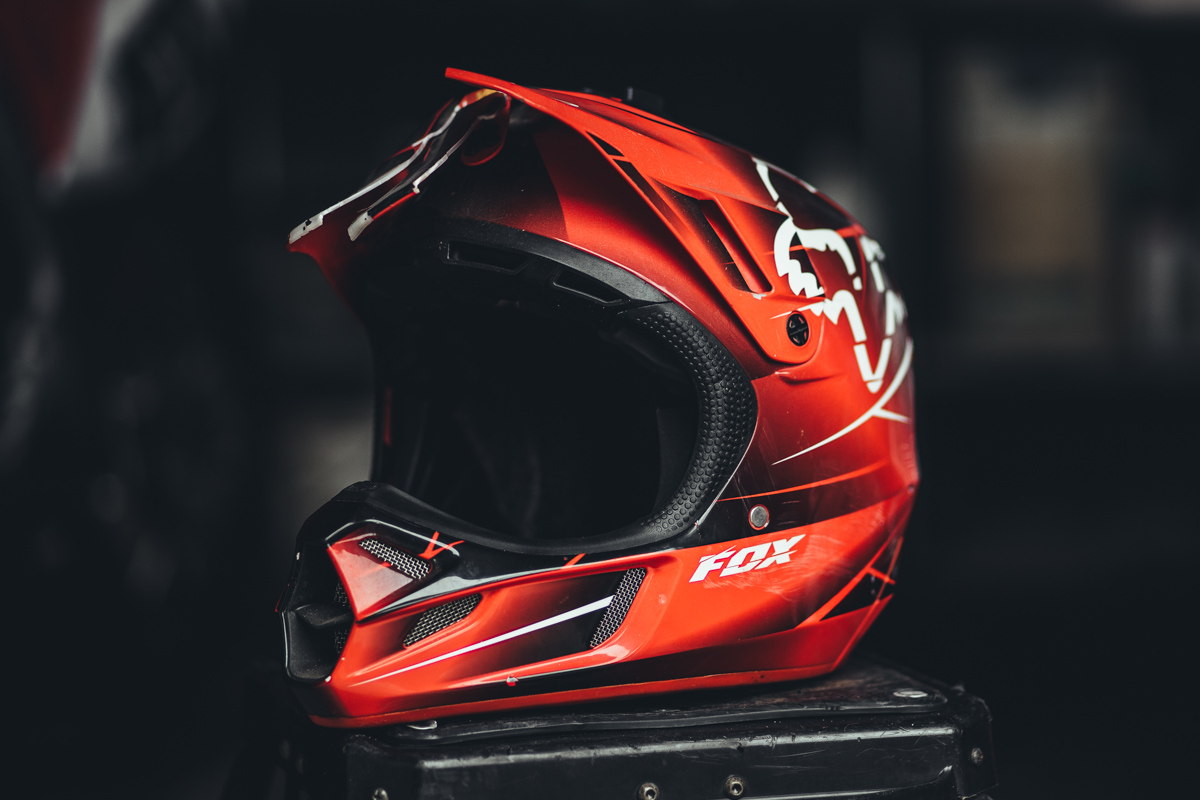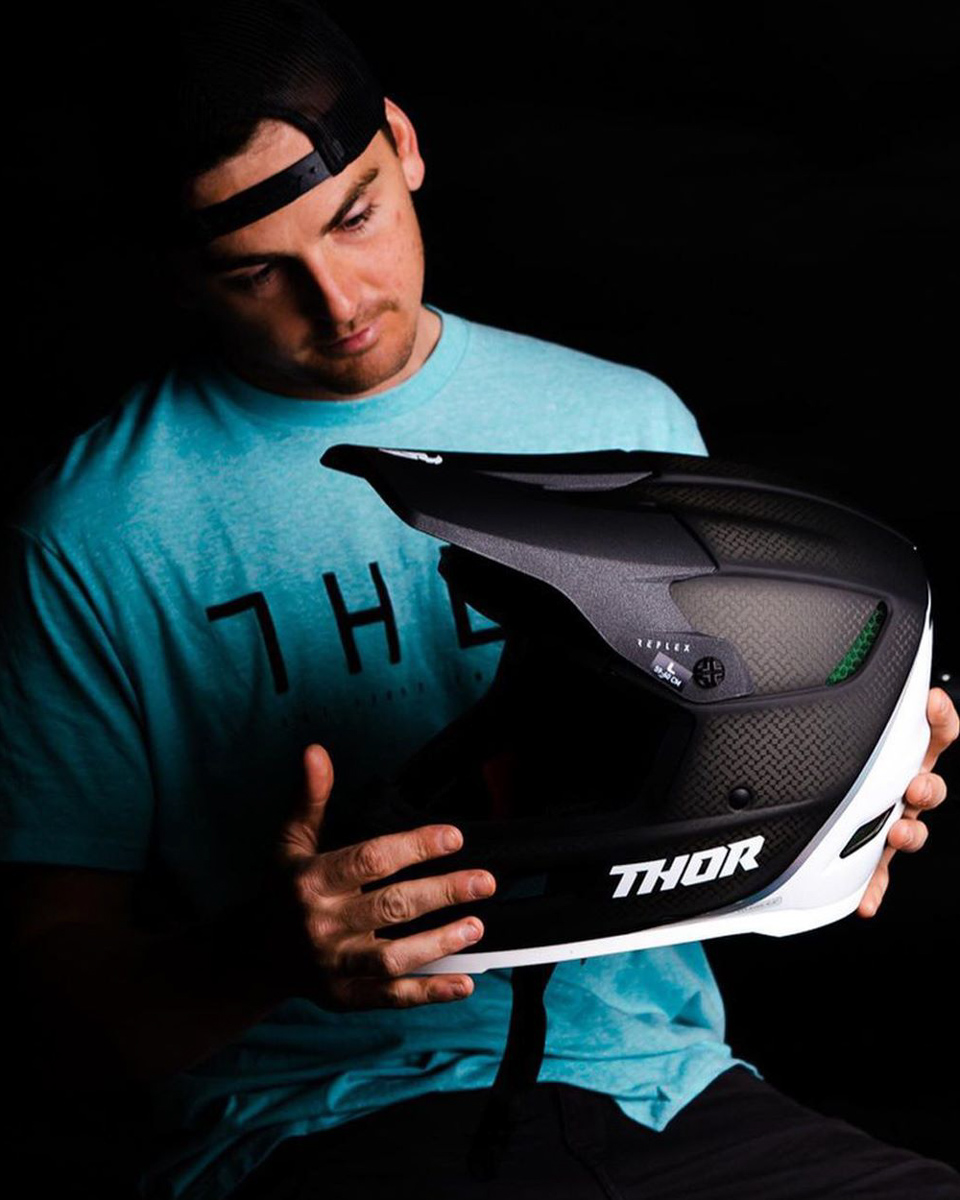Ultimate Guide to Dirt Bike Helmets

 A dirt bike helmet is a staple in any motocross or enduro riders kit, as it's the most important piece of protective gear.
A dirt bike helmet is a staple in any motocross or enduro riders kit, as it's the most important piece of protective gear.
In this ultimate guide, we cover the ins and outs to dirt bike helmets!
Why is a dirt bike helmet important?
A dirt bike helmet is the most important piece of protective gear any motocross or enduro rider will ever need to buy - at the end of the day, your brain is the most precious part of your body, so you want to protect it as much as possible. Ideally the more safety gear you can wear the better, but if you could choose only one item to wear before going for even the shortest of rides, it's without a doubt your helmet. Giving your brain the best protection money can buy should be paramount on everyone’s list of priorities when deciding on a budget for motocross gear. All too often we see people spending big on parts to make their bike faster, over putting the money into a decent helmet, or even buying a helmet purely on looks and not even trying to get one that fits correctly.
When should I replace my motocross helmet?
Your off-road helmet always needs to be in the best condition possible to ensure it protects your head and brain to the best of its ability, and there are three key signs that indicate your lid is due for replacement.


1. External/internal damage: Every motocross or enduro rider knows when they’ve had a good knock to the head, and that’s the type of impact that will make your MX helmet unusable. Now light crashes, or crashes where you don’t hit your head hard, and even dropping your helmet, won’t normally mean the helmet has had its one and done impact - but that is all dependent on the situation, which only you can determine after inspecting it. It’s more so the impacts that leave you rattled or with a concussion that calls for throwing it in the bin or hanging it up in the shed. You can inspect the outer shell and EPS liner for any abnormalities such as cracks and compression in the foam - you’ll need to inspect this closely, as they’re not always clearly visible. If in doubt, it’s best just to upgrade your helmet.
2. Expired helmet: Yes, that's right - your motorcycle helmet has an expiry! The majority of dirt bike helmet manufacturers recommend replacing your helmet within seven years from the production date, or five years from the purchase date (you can find the production date stamped inside the helmet). One key reason is the fact the materials that make up the helmet begin to deteriorate, meaning they're weaker and won't protect you as they were initially designed to.
3. Old technology: There's also the fact that motocross and dual-sport helmet technology is advancing so frequently - if you're helmet is five to seven years old, it's likely it has outdated safety features. We've seen motocross helmets come leaps and bounds in the last decade, and the advancements in technology is quite incredible. Some of the latest technology includes MIPS helmets and Bell Moto-10 Spherical.
So by upgrading your helmet every few years, you'll know you'll have the best possible protection when hitting the track or trail. If you even get four to five years out of helmet, that's a pretty good stint itself, but you're definitely due for an upgrade.
You can learn more about the latest in helmet technology here: Dirt Bike Helmet Technology
Dirt bike helmet technology types:
There are varying degrees of protection incorporated into every motocross helmet on the market, and the materials used to make a helmet influence how much protection the helmet provides. Different materials for the external shell dramatically change the level of overall protection the helmet offers.
The four materials helmet shells are made from are:
Polycarbonate
Fiberglass
Composite carbon fibre, Kevlar and fibreglass (Tri Composite)
Carbon Fibre
Alongside these materials, there's different technology available amongst each brand. The most popular helmet technology-shared amongst brands is MIPS, however there is helmet tech that's exclusive to a certain helmet maker, such as Bell's Flex or 6D's ODS system. You can learn more about helmet technology here: Dirt Bike Helmet Technology
.jpg)
.jpg)
What should I replace my helmet with?
When it comes to buying a new helmet, it's always best to get the best helmet you can afford, and the best helmet that fits your head. A helmet is one area of protective gear where you don't want to skimp out on, so put more budget towards a quality lid rather than parts that make your bike faster. So what's the difference between an entry-level and premium helmet? Let us explain.
An entry-level helmet will generally have basic features - meaning it will be on the heavier side, have minimal venting, and the fitment and comfort won't be at the level of a more expensive lid. There's also the face an entry-level helmet will just have the essential safety features, meaning there won't be any advanced technology built into the lid. All dirt bike helmets at MXstore meet the appropriate standards and certifications for use in Australia, such as the high ECE standard.
A premium helmet will have the latest in helmet technology, which is far more advanced than the standard protection systems found on an entry-level helmet. A premium lid will also be lighter, made from stronger and lighter materials, utilise an advanced ventilation system, and offer superior comfort and fitment. You can learn more about which helmet is right for you here:
Dirt Bike Helmet Buyer's Guide
Entry-Level Dirt Bike Helmet Comparison
Mid-Level Dirt Bike Helmet Comparison
Premium Dirt Bike Helmet Comparison
How do I look after my helmet?
Looking after your full face moto helmet is pretty straightforward, and there a couple of things to take note of. As we've made pretty obvious, your helmet is the most important piece of protective riding gear in your kit, so it should be treated and handled as such. This means cleaning your helmet without any harsh chemicals and rather using a helmet specific cleaner, and transporting your helmet in a bag or case to protect it while going to and from the track. You can learn more about how to clean your helmet here: How to Clean a Dirt Bike Helmet
.jpg)

Dirt bike helmet tips:
Remove helmet liner: Just like the rest of your riding gear, you want to keep it out of your gear bag after a long day of riding to prevent a horrid smell. The same goes for your helmet liner and cheek pads, which is why we recommend removing it at the track and placing it in a plastic bag.
Use a laundry wash bag: Speaking of helmet liners, to key to washing them without any damage is by throwing them in a laundry wash bag before putting them into your washing machine. This will give you that fresh helmet feeling for the next time you go riding.
Don't use harsh chemicals: It's super important not to use any harsh cleaning chemicals or solvents on your helmet. An MX helmet is made from some delicate materials, and harsh chemicals can cause them to break down and ultimately make the lid defective over time. This is why recommend a dedicated helmet cleaner.
Popular dirt bike helmet brands:
6D
Acerbis
Airoh
Alpinestars
Answer
Arai
Bell Helmets
Biltwell
Fly Racing
Fox Racing
JUST1 M2R KYT Nitro Helmets
Oneal
RXT
Shift
Shoei
Thor
Troy Lee Designs
Learn more about motocross helmets:
How To Wash Your Motocross Helmet
Dirt Bike Helmet Technology Guide
Dirt Bike Helmet Buyer's Guide
Entry-Level Dirt Bike Helmet Comparison
Mid-Level Dirt Bike Helmet Comparison
Premium Dirt Bike Helmet Comparison